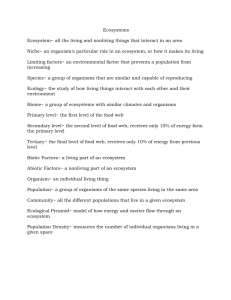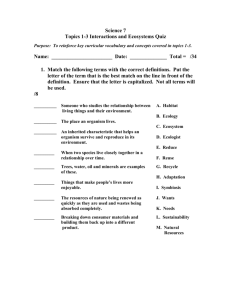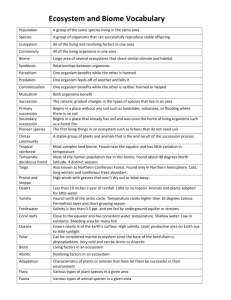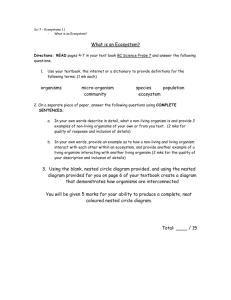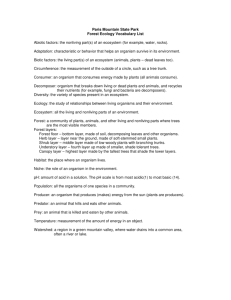Ecosystems - Hardin County Schools
advertisement
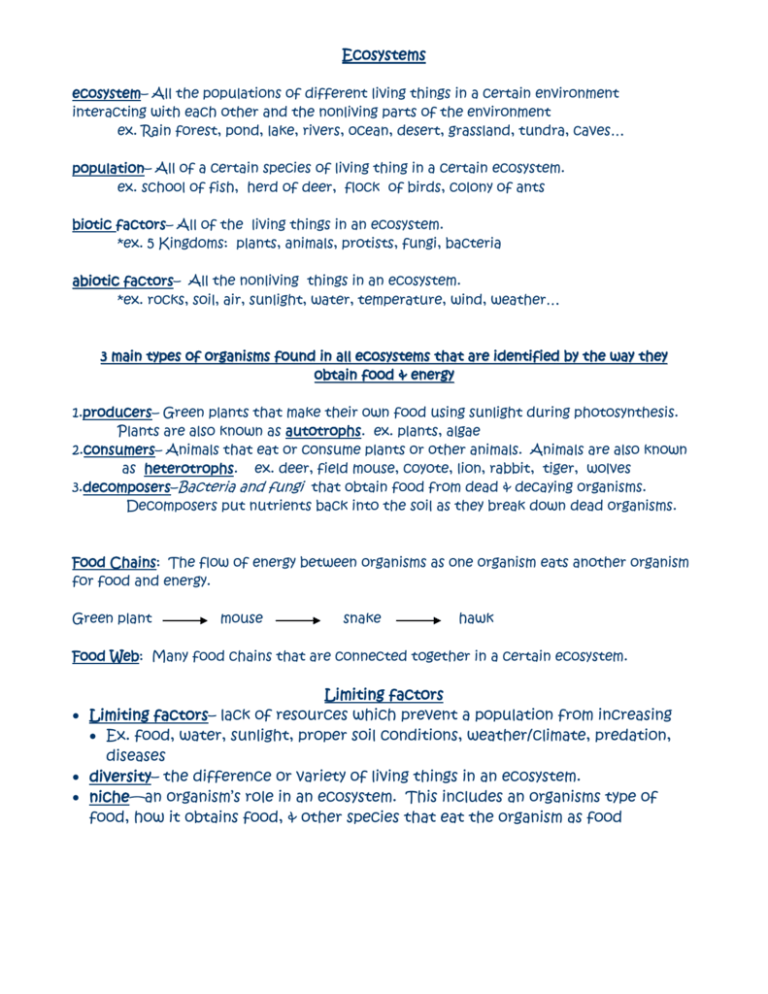
Ecosystems ecosystem– All the populations of different living things in a certain environment interacting with each other and the nonliving parts of the environment ex. Rain forest, pond, lake, rivers, ocean, desert, grassland, tundra, caves… population– All of a certain species of living thing in a certain ecosystem. ex. school of fish, herd of deer, flock of birds, colony of ants biotic factors– All of the living things in an ecosystem. *ex. 5 Kingdoms: plants, animals, protists, fungi, bacteria abiotic factors– All the nonliving things in an ecosystem. *ex. rocks, soil, air, sunlight, water, temperature, wind, weather… 3 main types of organisms found in all ecosystems that are identified by the way they obtain food & energy 1.producers– Green plants that make their own food using sunlight during photosynthesis. Plants are also known as autotrophs. ex. plants, algae 2.consumers– Animals that eat or consume plants or other animals. Animals are also known as heterotrophs. ex. deer, field mouse, coyote, lion, rabbit, tiger, wolves 3.decomposers–Bacteria and fungi that obtain food from dead & decaying organisms. Decomposers put nutrients back into the soil as they break down dead organisms. Food Chains: The flow of energy between organisms as one organism eats another organism for food and energy. Green plant mouse snake hawk Food Web: Many food chains that are connected together in a certain ecosystem. Limiting factors Limiting factors– lack of resources which prevent a population from increasing Ex. food, water, sunlight, proper soil conditions, weather/climate, predation, diseases diversity– the difference or variety of living things in an ecosystem. niche—an organism’s role in an ecosystem. This includes an organisms type of food, how it obtains food, & other species that eat the organism as food
